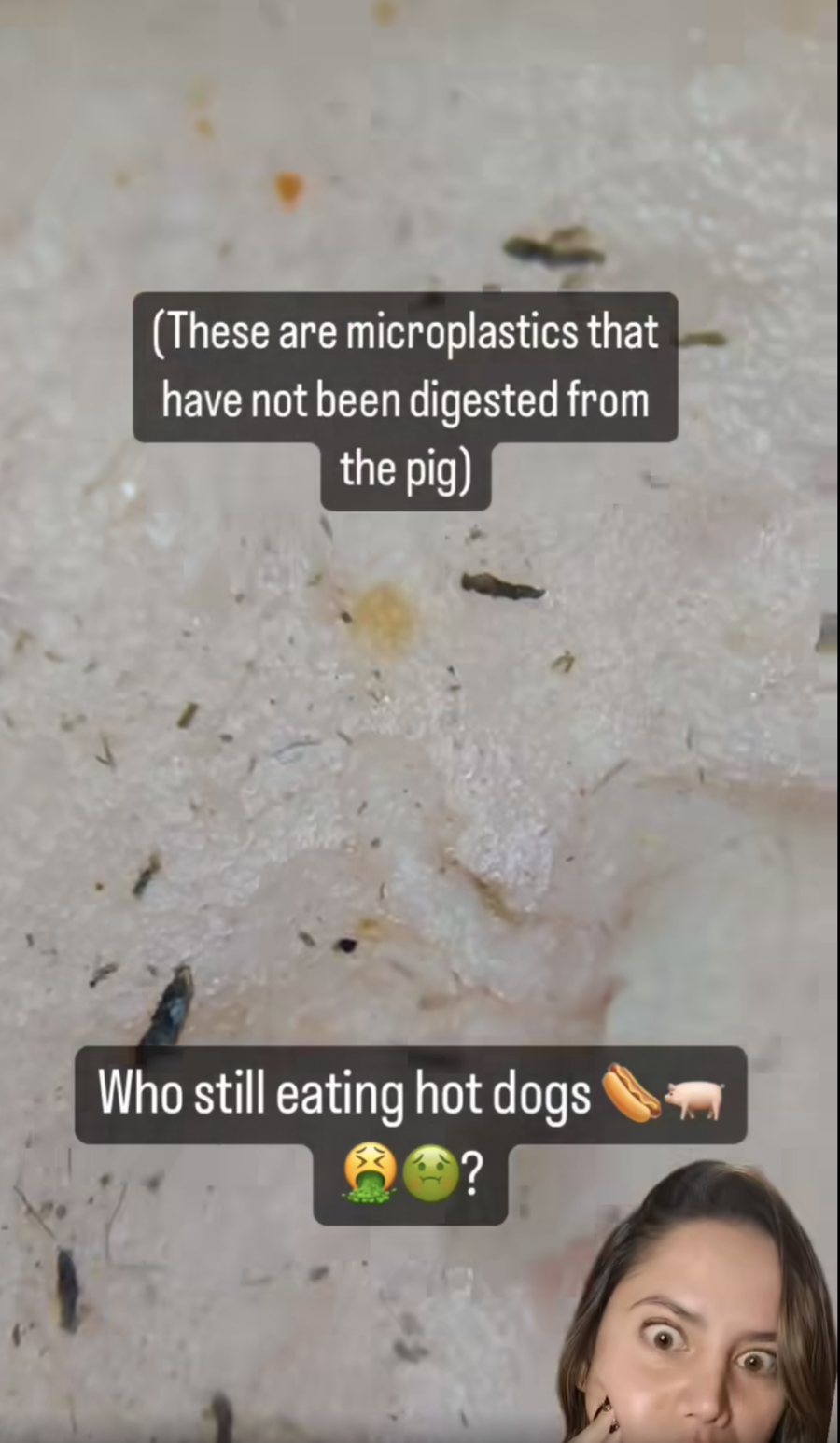
Does a video of a hot dog slice under a microscope prove that hot dogs have parasites in them? No, that's not true: A food science expert told Lead Stories that this video was "completely made-up." The U.S. Department of Agriculture told Lead Stories that hot dogs are ready-to-eat products that are "extremely unlikely" to be able to house parasites.
The claim appeared on Facebook (archived here) on November 27, 2023, with on-screen text reading "STOP EATING HOT DOGS 🪱🤢" and "Who still eating hot dogs 🌭🐖🤮🤢?" The caption started:
HOT DOGS = PARASITES 🪱🤢 pork is one of the WORST foods for containing parasites, especially the ones that can invade the BRAIN!
This is what the post looked like on Facebook at the time of writing:
(Source: Facebook screenshot taken on Wed Dec 6 16:42:16 2023 UTC)
The video shows a gloved person cutting a slice of meat from a hot dog and placing it underneath a microscope's lens. A woman making dramatic facial expressions can also be seen in the lower right corner. The video then cuts to a fleshy background sprinkled with unidentifiable flakes and hairs. The on-screen caption reads "(These are microplastics that have not been digested from the pig)." A second cut from the hot dog is made. Through the lens, viewers see two slides, both containing bacteria-like figures. On one of the slides, the bacteria-like figures are moving. The creator of this video did not identify the figures seen under the microscope.
In the post's caption, there is a line from a "Havard" medical doctor named Dr. Hellman who has allegedly said, "Brain parasites are a lot more common than people think." Lead Stories searched "Dr. Hellman AND Harvard M.D. AND 'brain parasites are a lot more common than people think'" in Google News (archived here), with no results.
Lead Stories spoke to Donald Schaffner (archived here), the department chair of food science at Rutgers University, on a December 7, 2023, phone call. Schaffner told us, "This video is completely made-up." He commented on the thickness of the slice in this video. He noted that a slice that thick would not allow light through, therefore making it impossible to examine the slice with a microscope. Schaffner also noted that the Food Safety and Inspection Service, part of the U.S. Department of Agriculture (USDA), makes sure that all hot dogs are cooked to a certain temperature to make sure parasites can't live inside the meat. The USDA's page on hot dogs says they have been cooked "to the Federal standards of identity" (archived here).
A Food Safety and Inspection Service spokesperson emailed on December 12, 2023, that:
Hot dogs are a ready-to-eat product according to the Federal standards of identity. These standards include requirements that hot dogs be comminuted (reduced to minute particles), semisolid products made from one or more kinds of raw skeletal muscle from livestock (like beef or pork), and may contain poultry meat. The process and food safety verification associated with production of hot dogs makes it extremely unlikely that there could be a parasite in the hot dogs ... For guidance on cooking temperatures and safe handling instructions, please visit the Safe Minimum Internal Temperature Chart for Cooking on www.Foodsafety.gov.
Lead Stories has also reported that all autoimmune diseases are not caused by parasites, Pepsi does not produce parasites when poured on raw pork and turpentine oil is not a remedy to cleanse parasites.
















